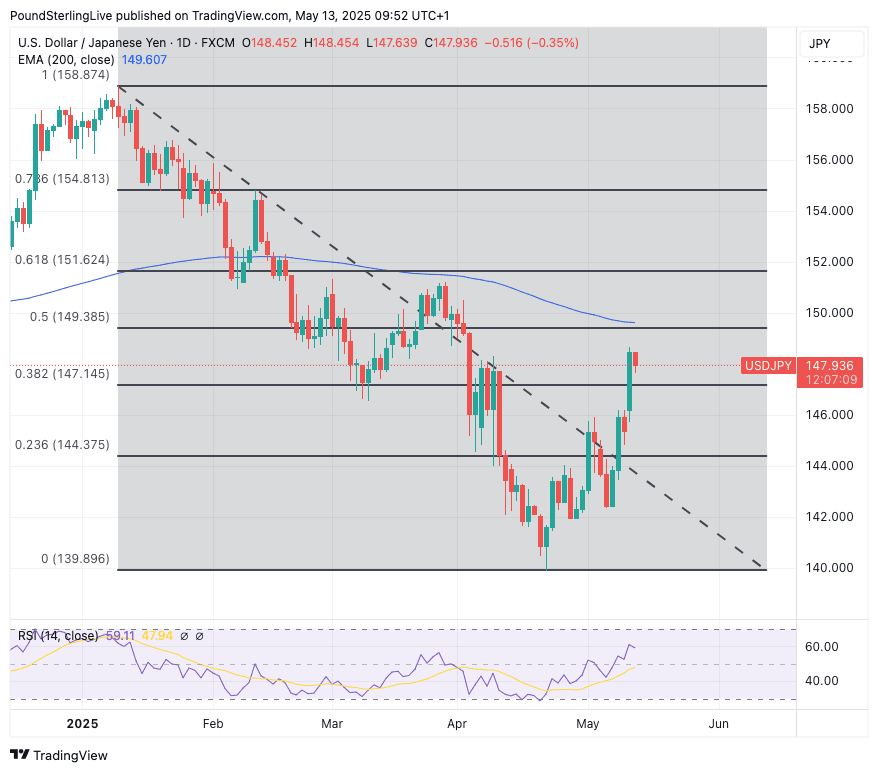Sell Dollar-Yen Strength: OCBC
- Written by: Sam Coventry

Image © Adobe Images
Although the Dollar has risen to one-month highs against the Yen, its strength will have its limits.
This is according to strategists at the Oversea-Chinese Banking Corporation (OCBC) in Singapore, who say to sell Dollar-Yen rallies in a new briefing note.
"Even as BoJ is on hold, we believe the Fed could lower rates at some point in 2Q 2025. The Fed-BoJ policy divergence should continue to underpin broader direction of travel for USDJPY to the downside," says OCBC.
The call comes amidst a broader U.S. Dollar recovery following a torrid start to the year. The yen was a beneficiary of the USD selloff, particularly given the need of Japanese investors to cover unhedged FX exposure on U.S. assets.
Safe-haven demand - a key driver of JPY strength in times of uncertainty - has also faded, with OCBC citing the recently announced U.S.-China 90-day trade truce, last week's U.S.-UK trade deal and the India-Pakistan ceasefire.
However, strategists continue to look for USDJPY to trend lower, premised on the USD sell-off story and Federal Reserve-Bank of Japan policy divergence at some point (Fed rate cut cycle while the BoJ has room to further pursue policy normalisation).
"Wage growth, broadening services inflation and upbeat economic activities in Japan should continue to support BoJ policy normalisation although tariff uncertainty may temporarily delay policy normalisation in the near term," explain analysts.
"Fed-BoJ policy divergence should bring about further narrowing of UST-JGB yield differentials, in turn underpinning the broader direction of travel for USDJPY to the downside," they add in a weekly FX research briefing.
Although technicals are constructive for further Dollar-Yen upside (bullish momentum is visible on the daily chart), OCBC notes the RSI has risen close to overbought conditions.
"Resistance at 149.40/70 levels (50% fibo, 200 DMA) before 150.30 (100 DMA), 151 levels," says the note.
Above: USD/JPY at daily intervals showing Fibonacci retracement levels and the 200-day moving average.

